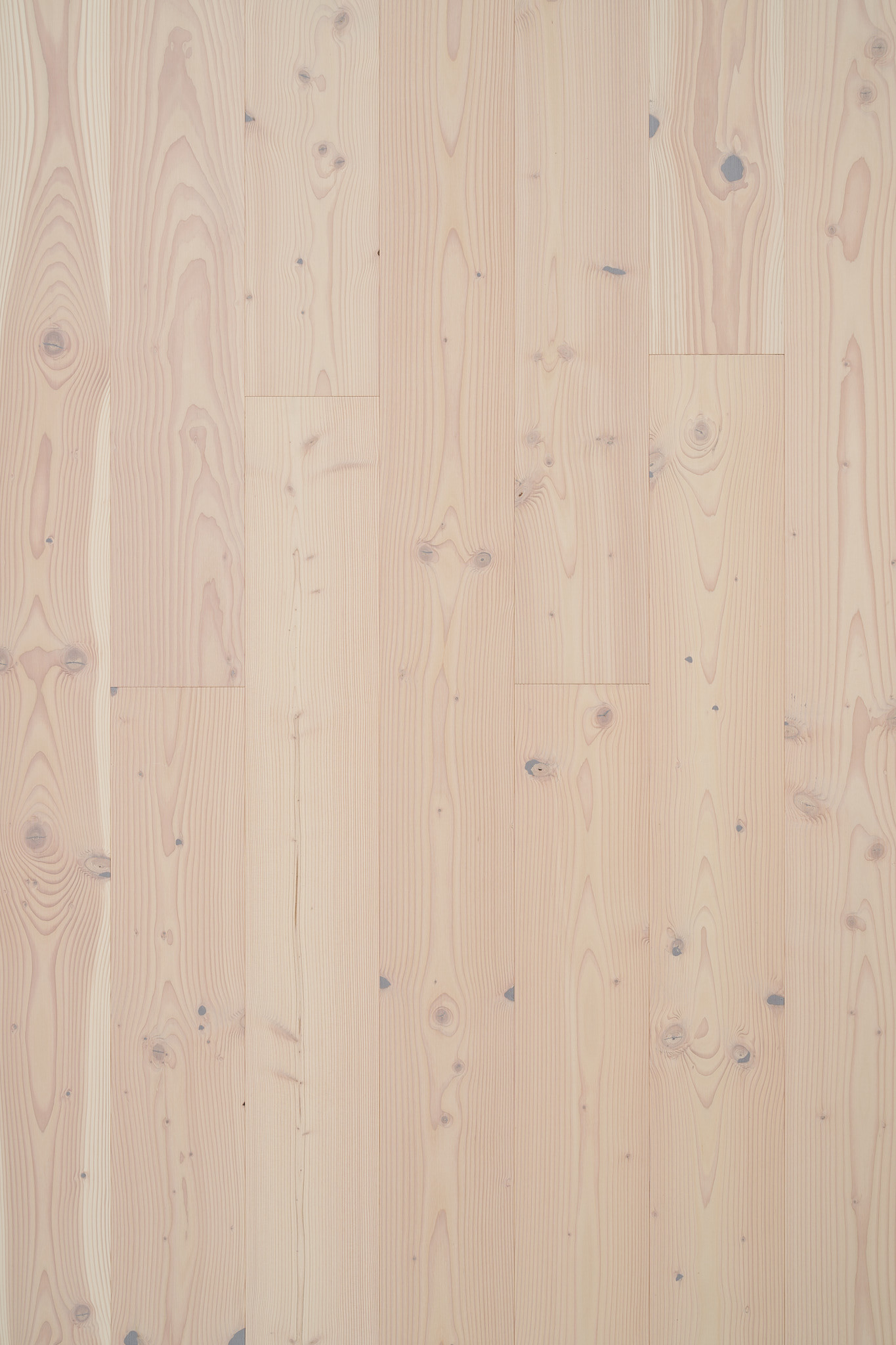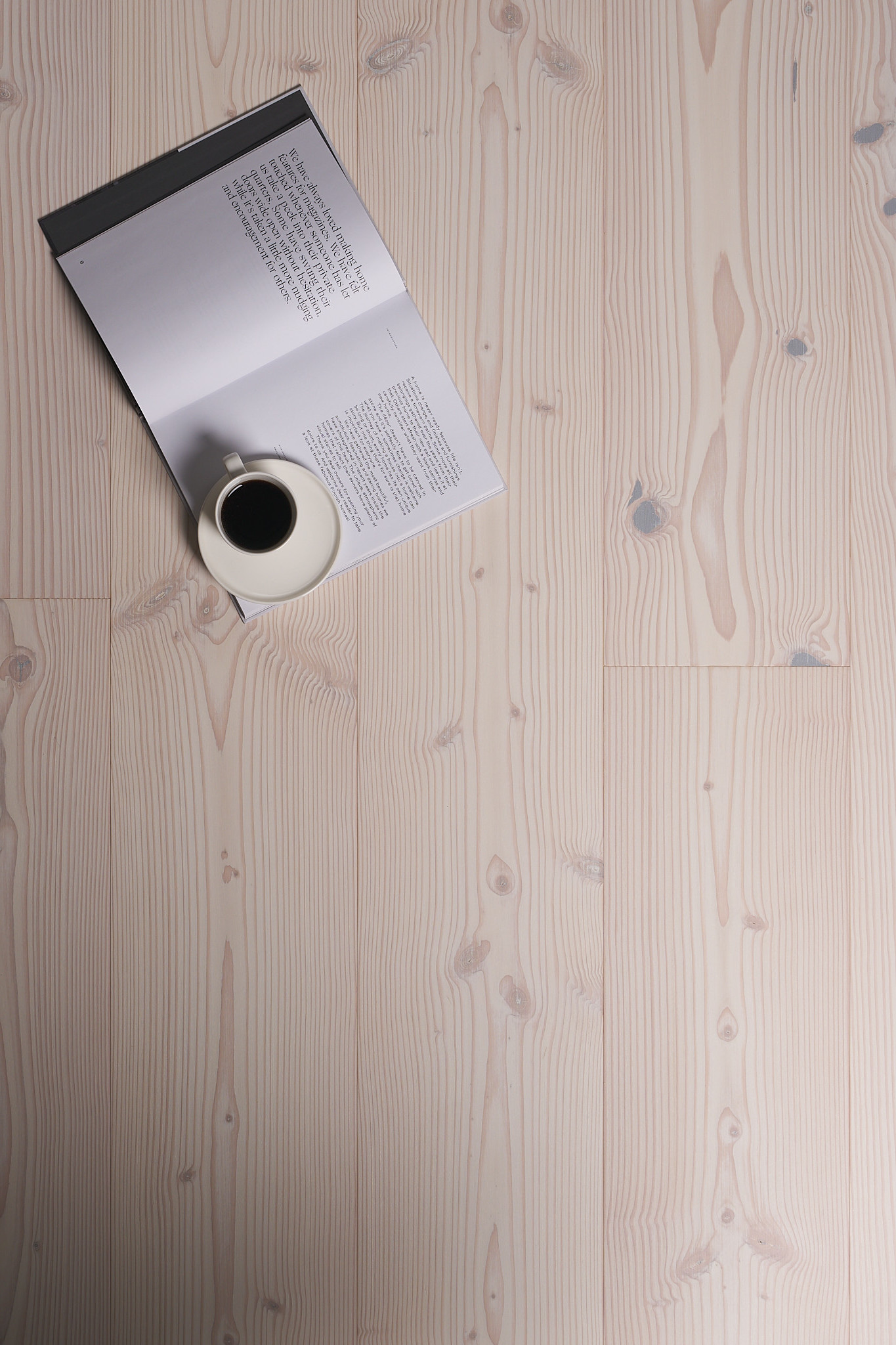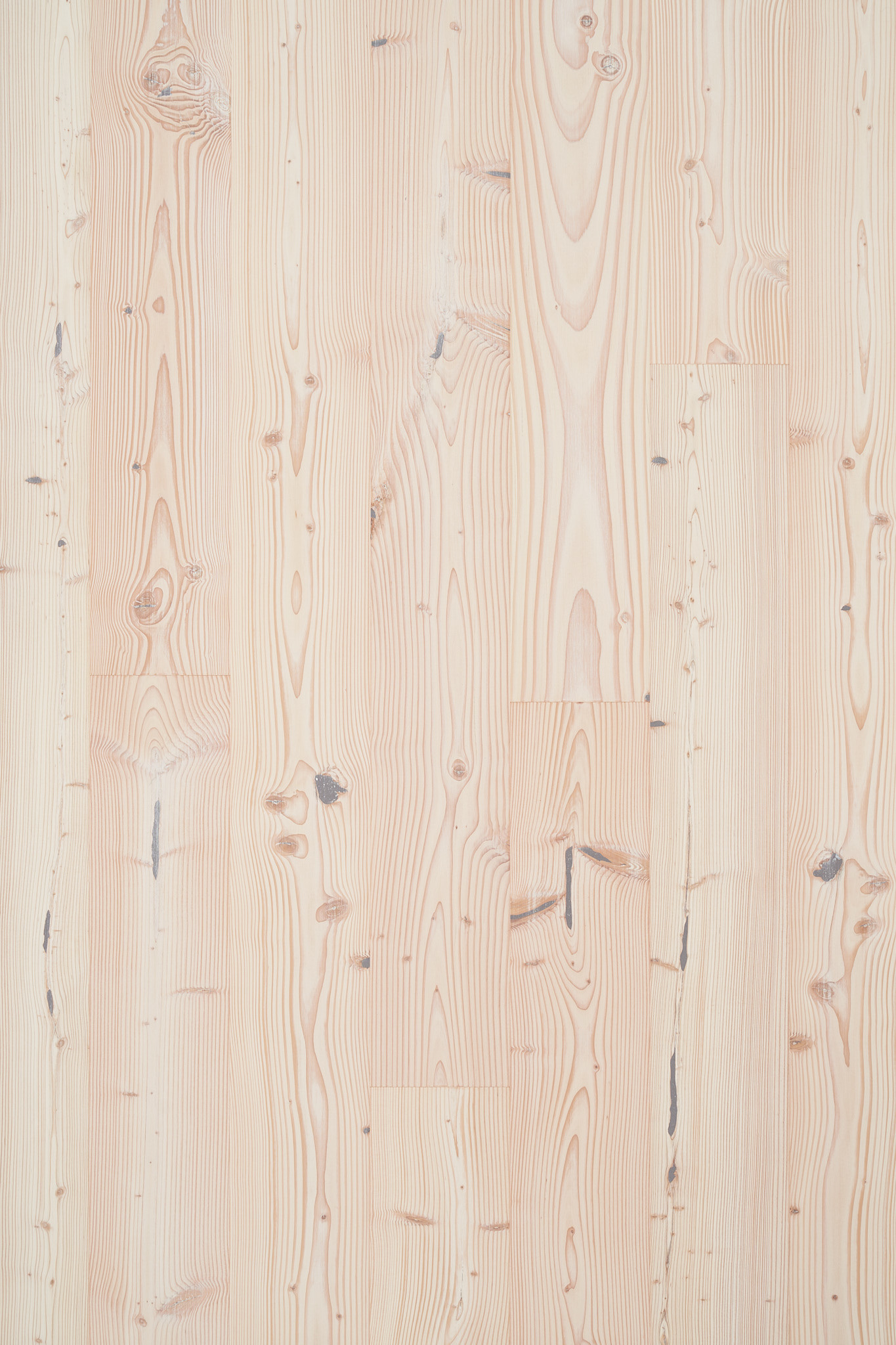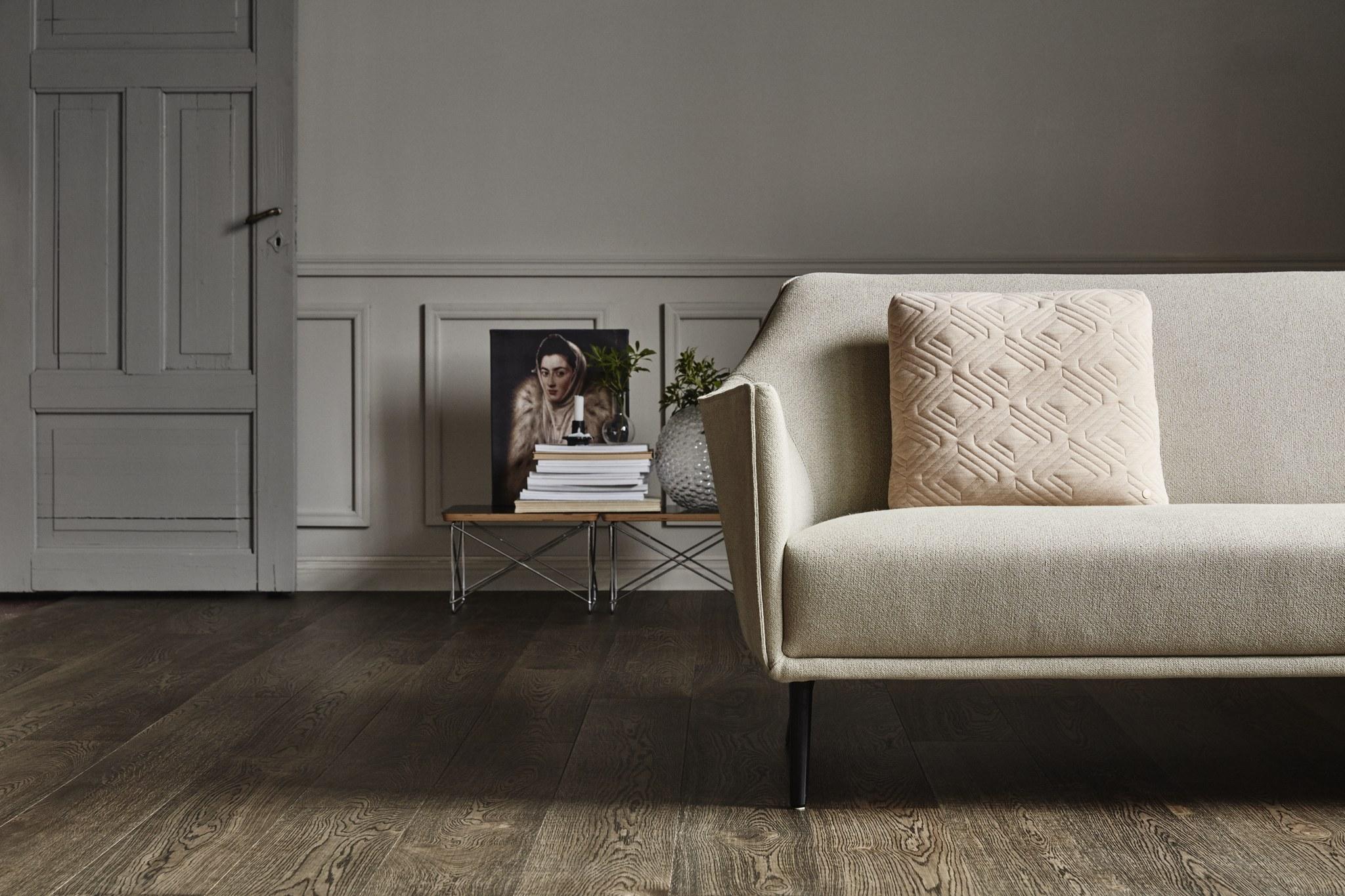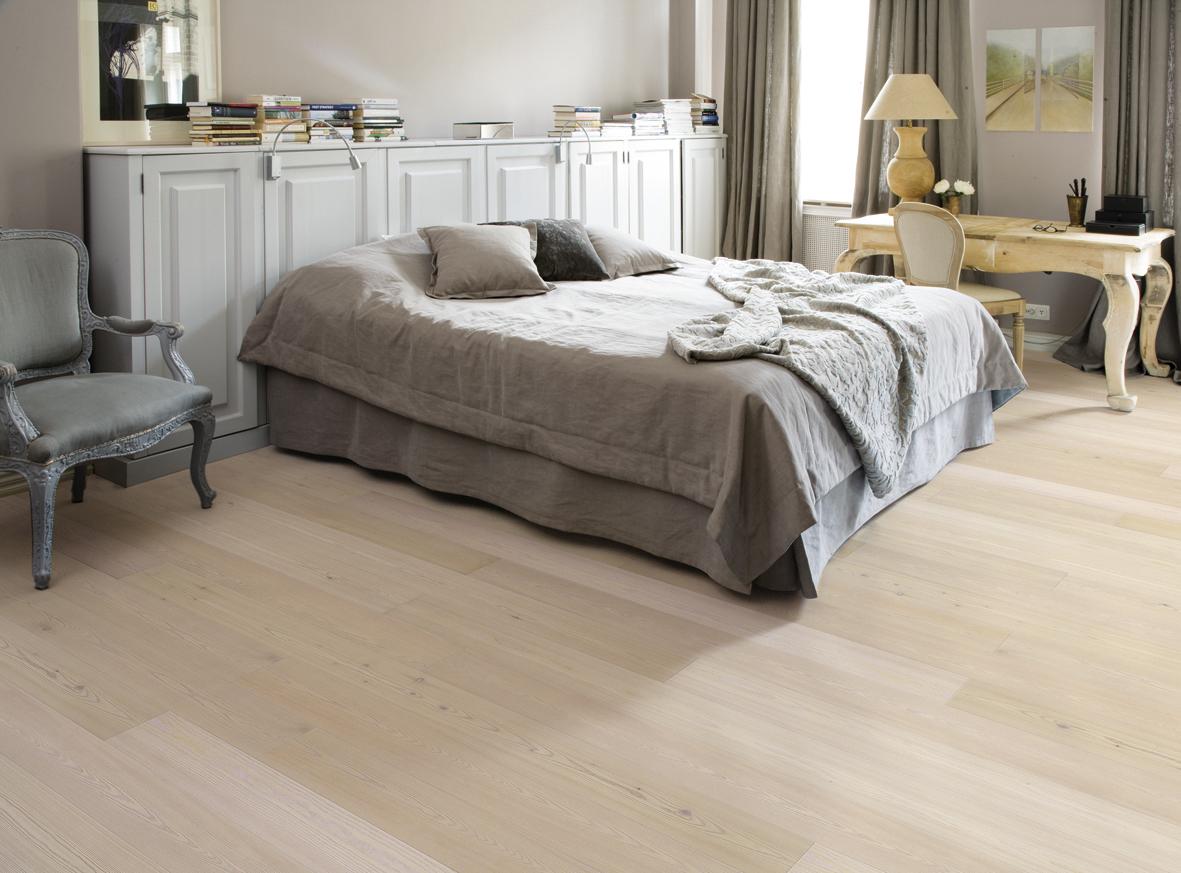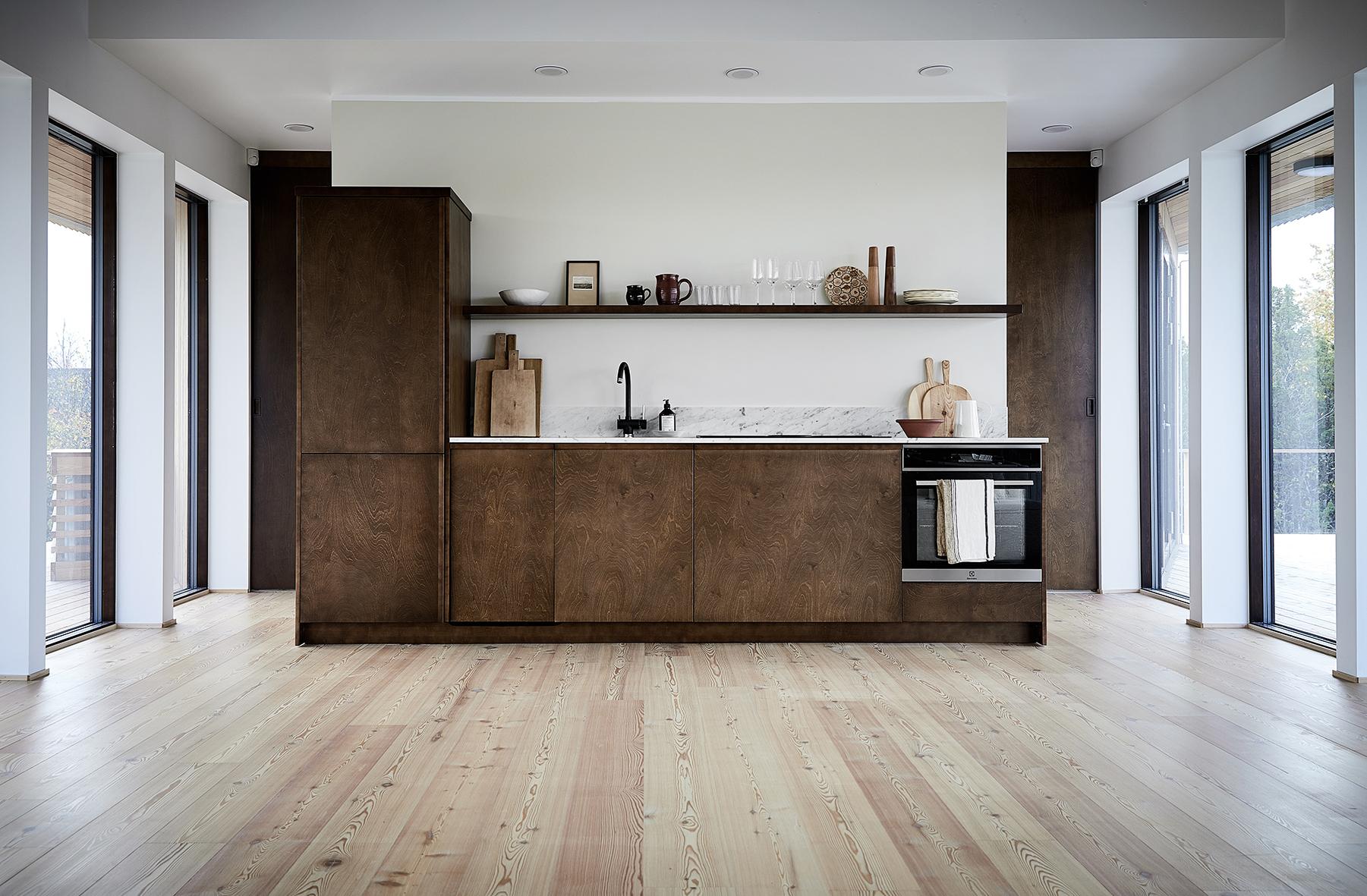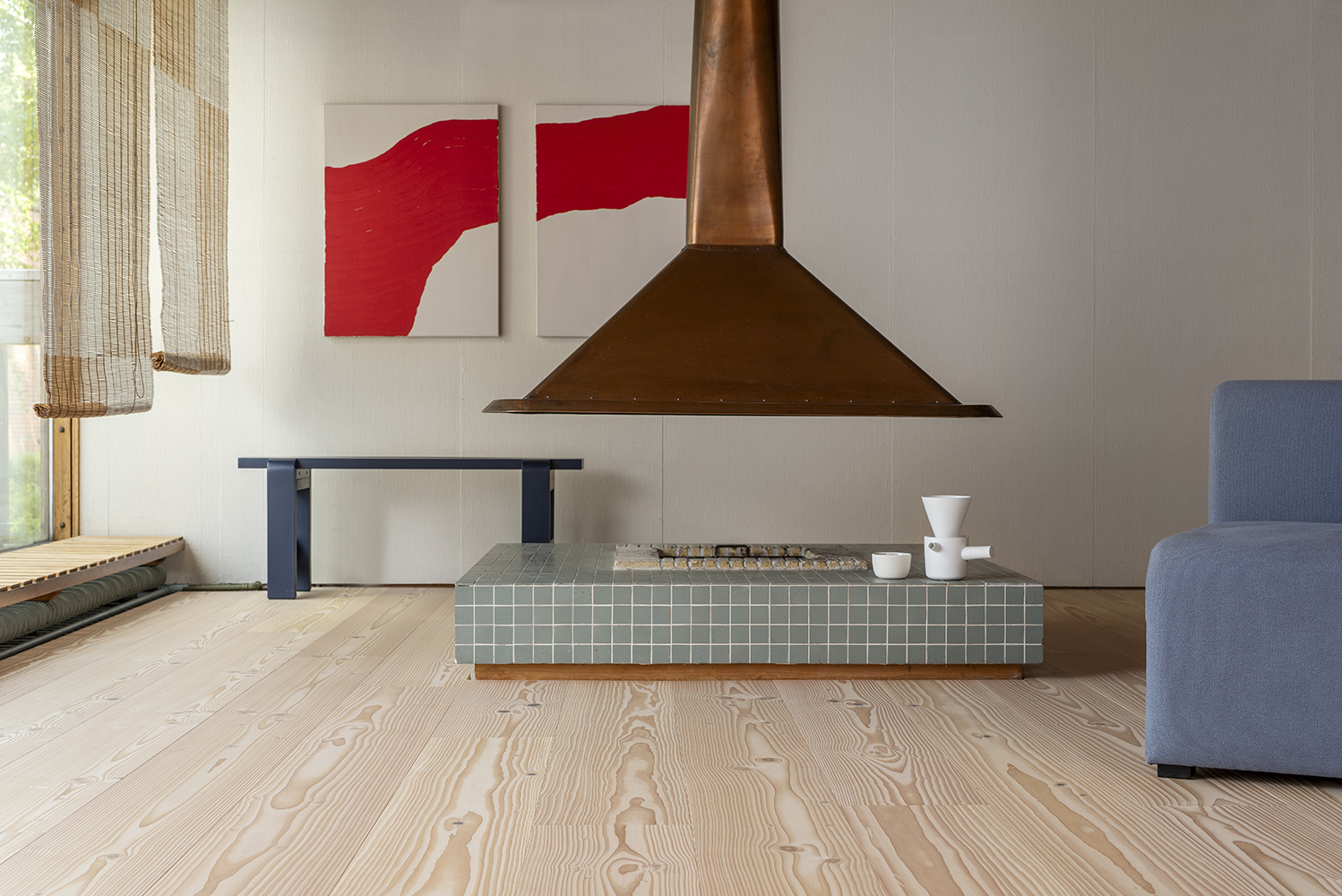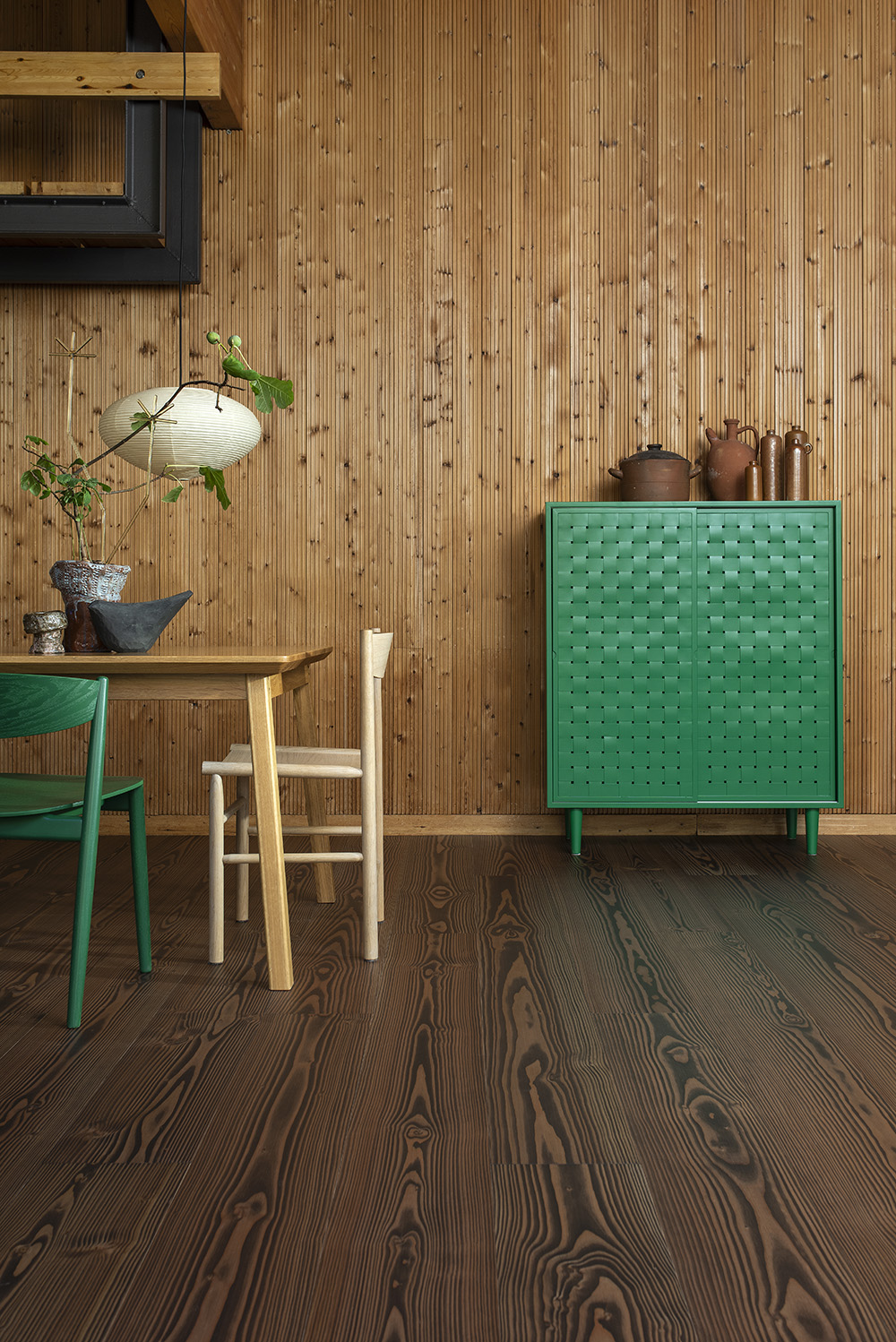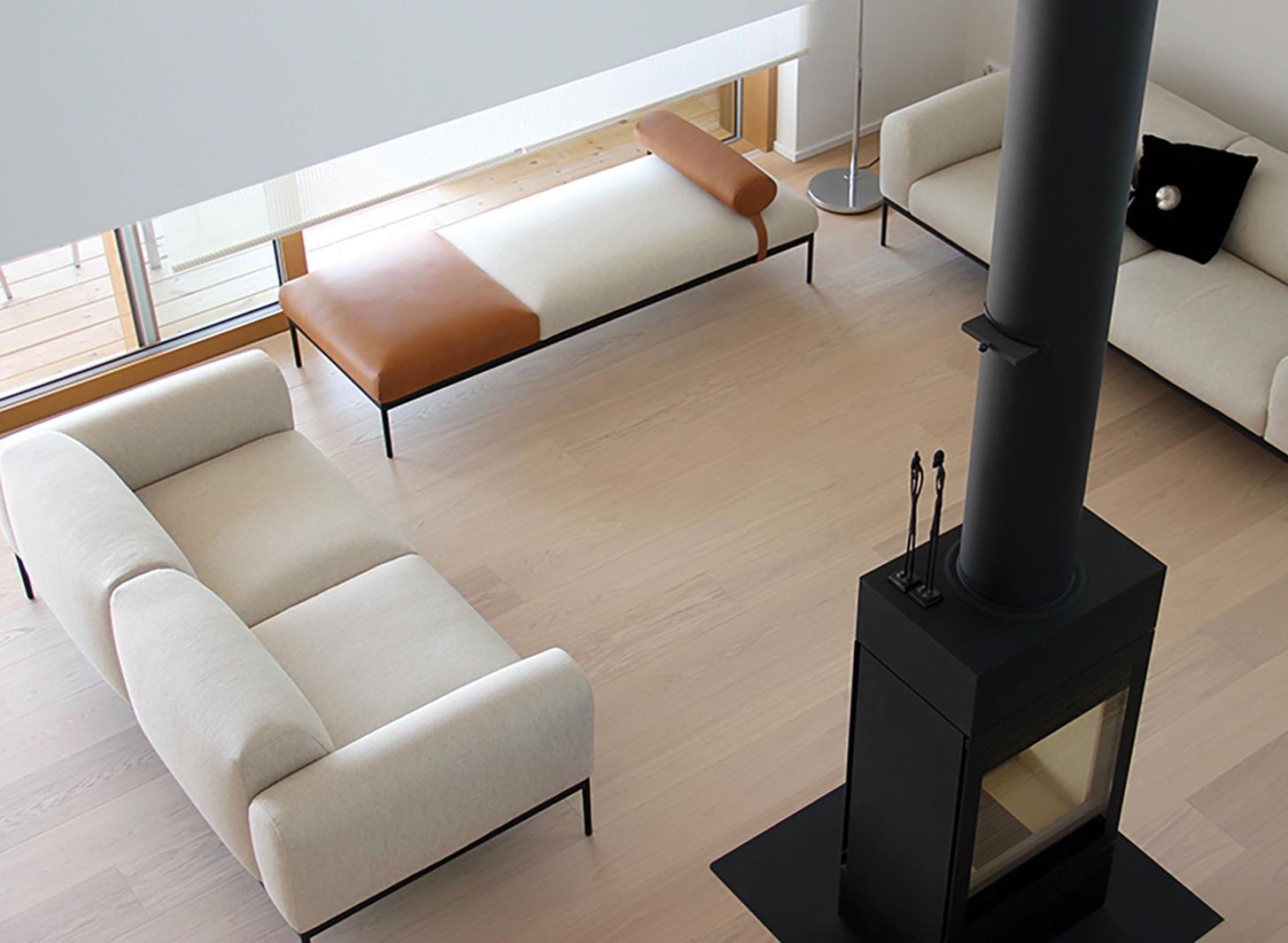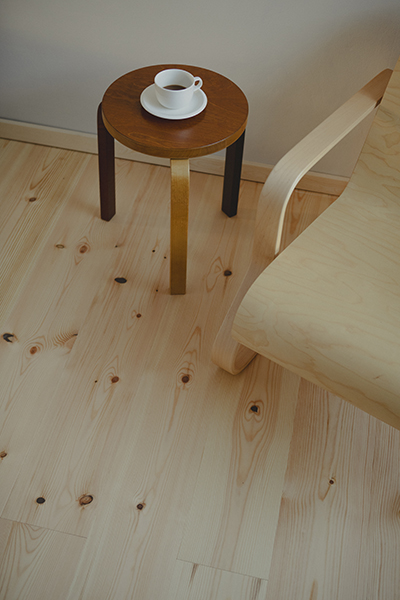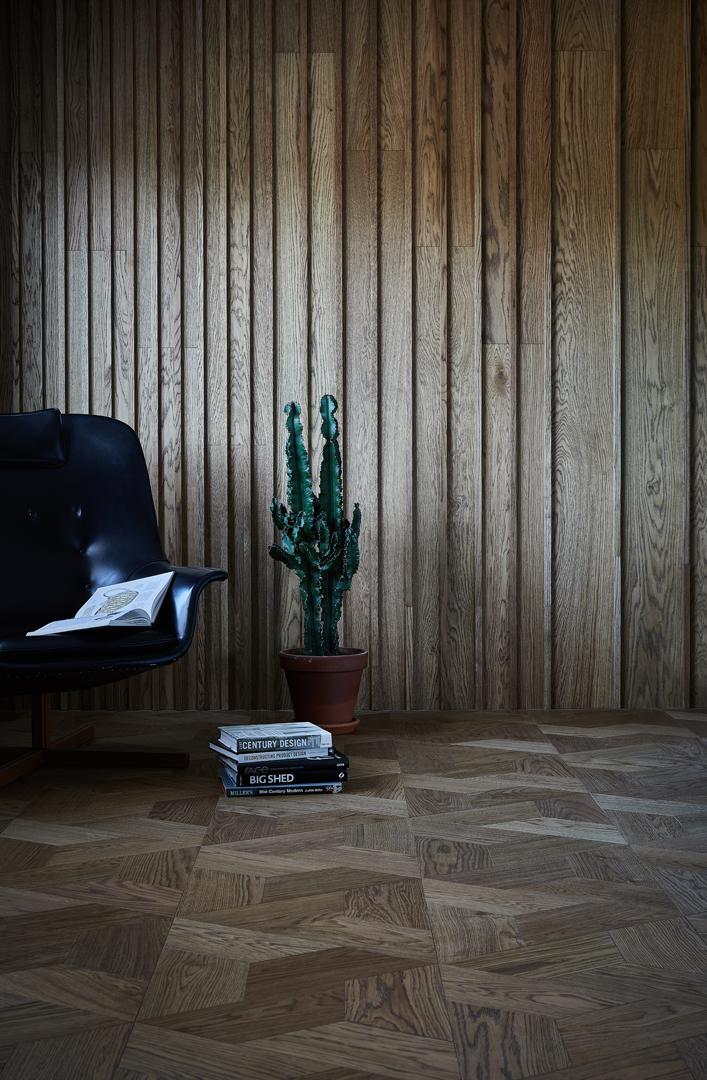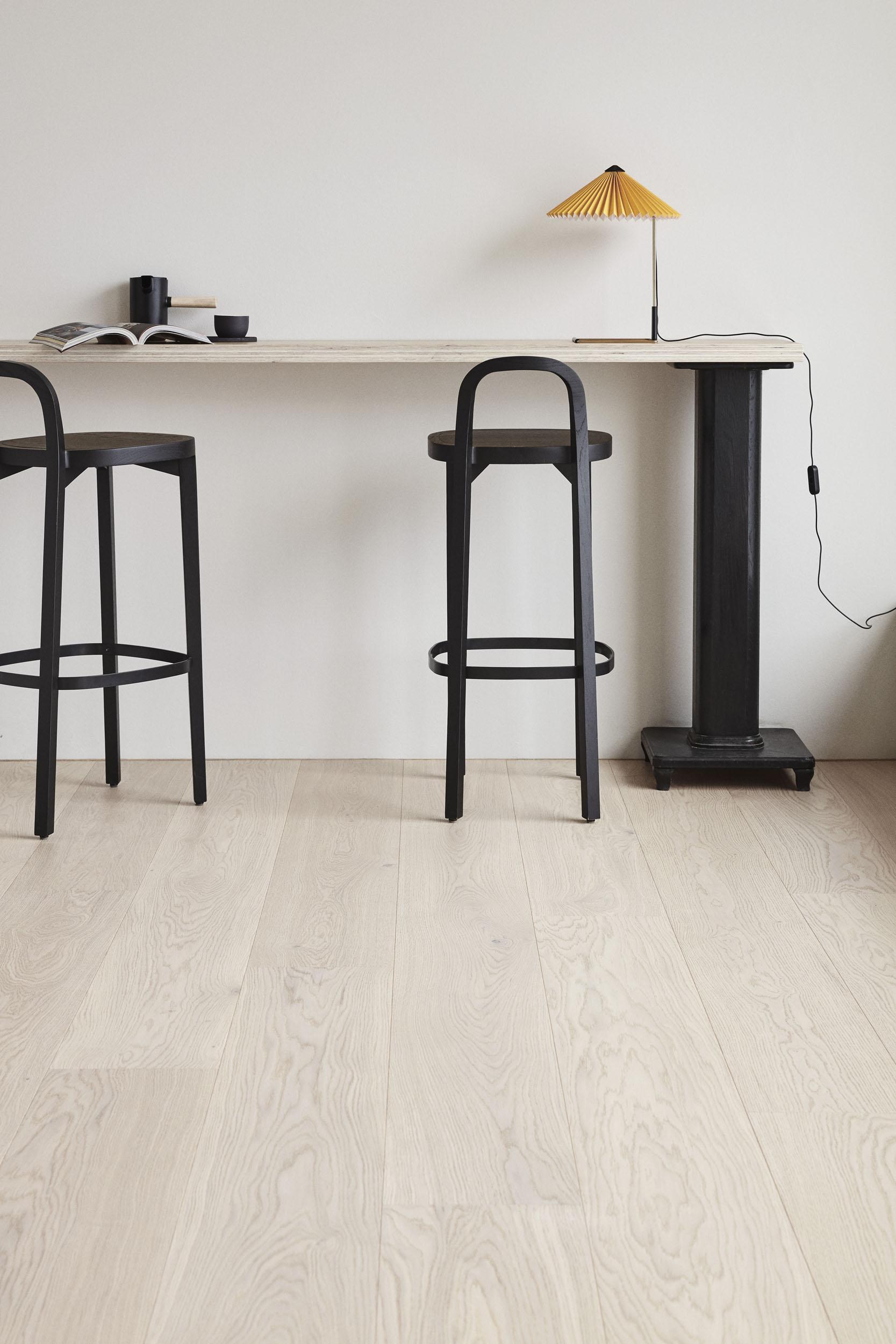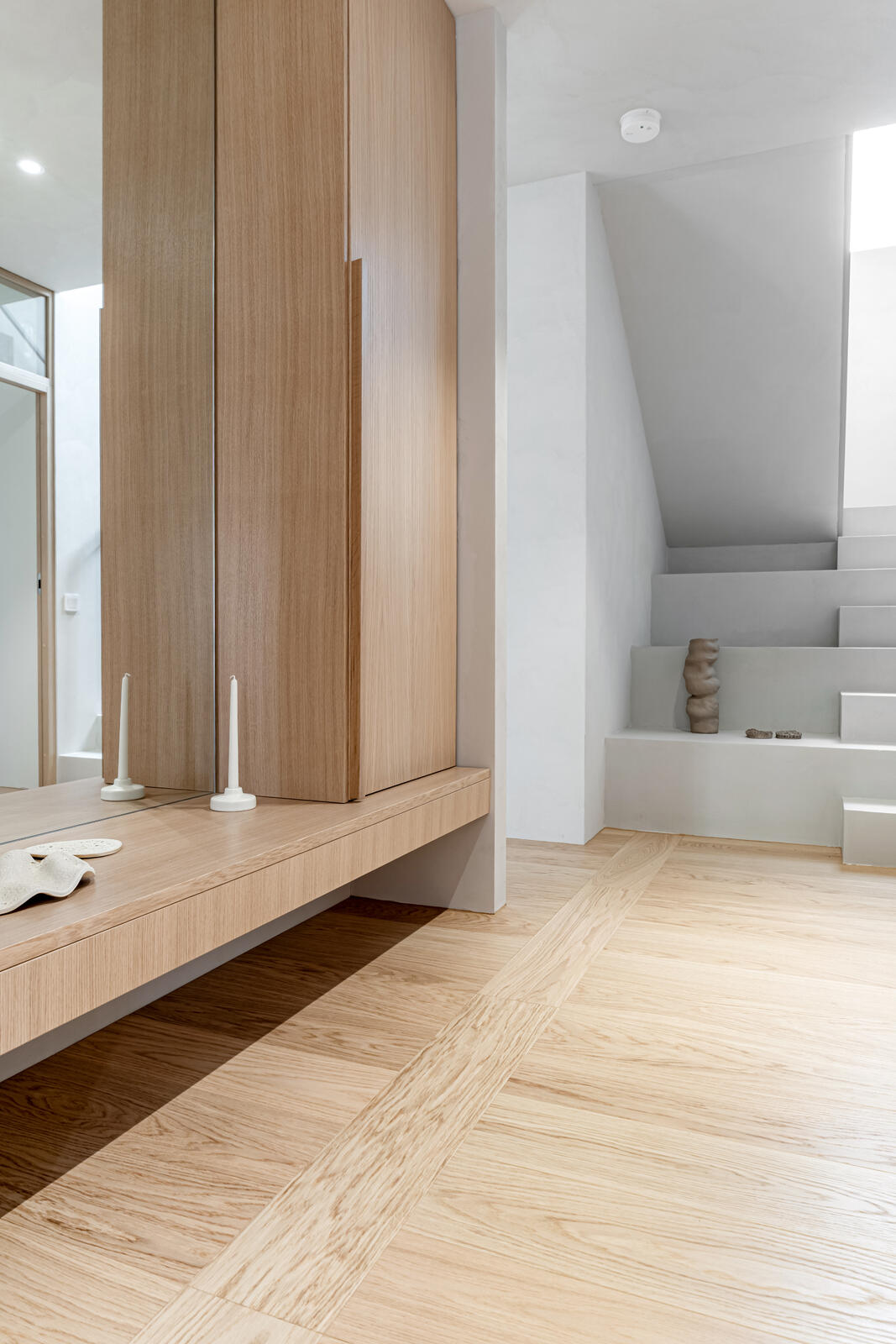Douglas fir
Douglas fir, one of the most common wood species in Europe, is a spectacular choice. Douglas fir’s characteristics include large color variations and knots. Thanks to the light surface treatment, Douglas fir is also excellent for Scandinavian and minimalist interiors.
The natural color variation of Douglas fir includes a change in tone from light yellowish to reddish. The grade is allowed to have knotted branches and sapwood.
All types of wood can react to excessively dry indoor air. If the relative humidity (Rh) drops below the recommended 35–60%, cracks may appear in the flooring. Therefore, it is important to monitor indoor humidity, especially during dry seasons such as winter, and increase humidity if necessary, for example, with a humidifier. Softwood species (e.g., Pine, Larch, and Douglas fir) are particularly sensitive to dry indoor air and may develop hairline cracks or larger cracks more quickly. The optimal humidity level of 35–60% Rh is also the most suitable indoor humidity level for humans.
Timberwise floors can safely be installed on an underfloor heating system. Douglas fir/Pine/Larch is a softwood tree species. Softwood are structurally more sensitive to moisture and dryness fluctuations than hardwoods. Underfloor heating may potentially cause cracks on the surface of a softwood floor. Considering this, softwood floors can still be installed with underfloor heating.
